Email Warmup
How to Warm up an Email Domain
Curious about how to warm up an email domain? Discover the crucial strategies that can make or break your domain's deliverability and impact.
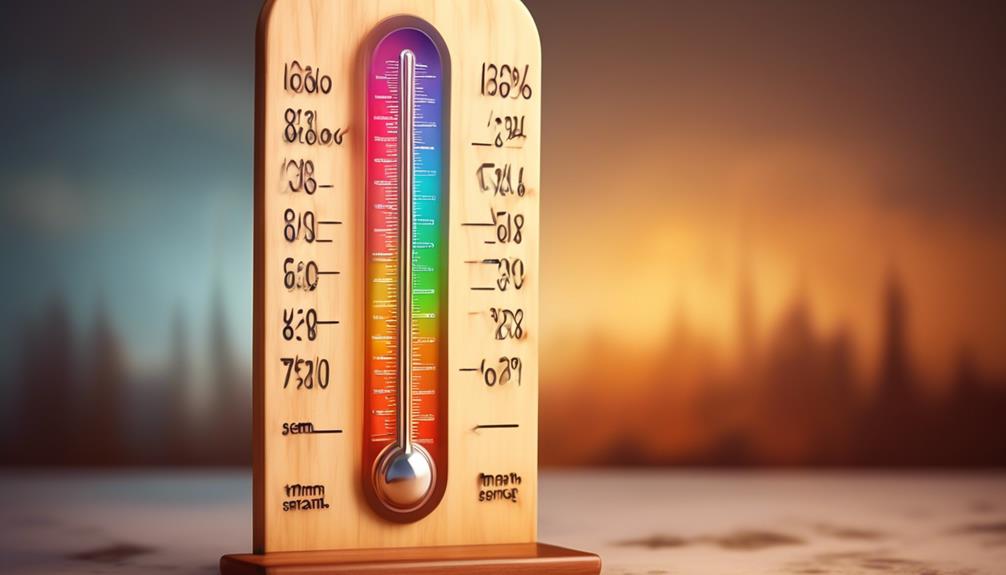
Have you ever thought about how to optimize your email domain for maximum effectiveness?
Warming up an email domain is a crucial step in establishing its credibility and reputation.
As we navigate the complexities of domain warm-up, it's essential to understand the key strategies and best practices to solidify our presence in the digital realm.
So, let's explore the intricacies of this process and uncover the nuances that can make or break our domain's deliverability and impact.
Key Takeaways
- Gradually increasing email send volumes is crucial for establishing a positive email reputation.
- Domain warm-up helps build trust with ISPs and ESPs.
- Factors like delete rate, spam reports, and bounce rate affect domain reputation.
- Regularly cleansing the email list improves email deliverability and engagement rates.
Domain Warm-up Importance
Gradually increasing email send volumes from a new domain is crucial for establishing a positive email reputation. Domain warm-up is of utmost importance as ISPs and ESPs closely monitor the sending reputation of new domains.
Without a proper warm-up, these entities are likely to limit the volume of emails that can be sent, hindering deliverability. By gradually increasing email send volumes, domain warm-up helps build trust with ISPs and ESPs. This trust is essential for ensuring that emails reach recipients' inboxes instead of being marked as spam or not delivered at all.
Domain warm-up directly impacts reputation and deliverability, making it a critical process for any new email domain. Factors like the age and reputation of a domain play a significant role in email deliverability.
Understanding the importance of domain warm-up and implementing best practices can significantly improve the reputation and deliverability of an email domain. Therefore, it's crucial to prioritize domain warm-up to establish a positive sending reputation and optimize email deliverability.
Impact on Domain Reputation
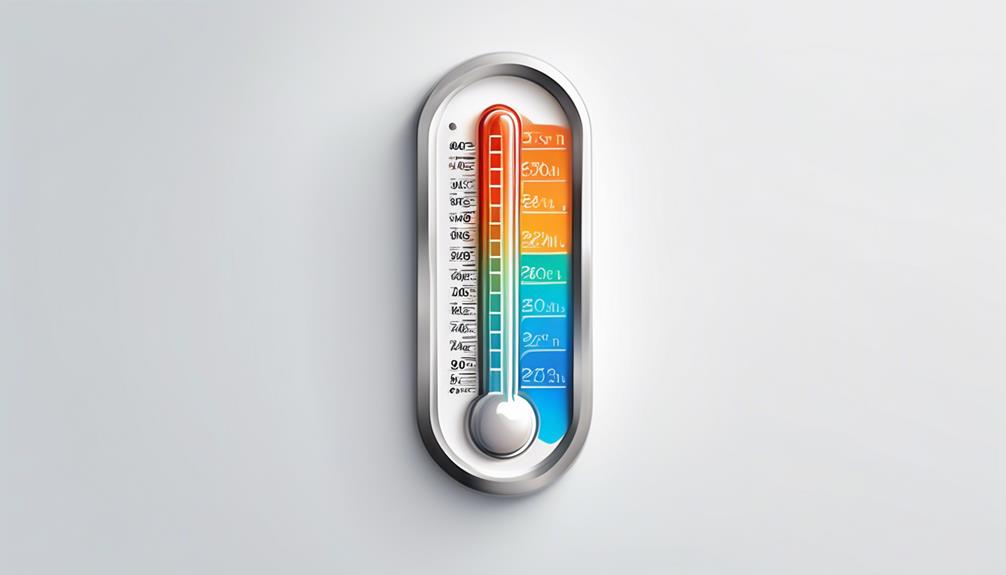
Our domain's reputation greatly influences our email deliverability and the level of trust we establish with ISPs and ESPs. Factors such as delete rate, spam reports, unsubscribe requests, email content, engagement rate, blacklists, and bounce rate have a direct impact on our domain reputation.
It's crucial to monitor and optimize these factors to ensure our domain's trustworthiness and maintain high deliverability rates.
Domain Trustworthiness
To establish a strong sending reputation and mitigate potential risks, warming up a new email domain is crucial for building trustworthiness and improving domain reputation. As we focus on domain trustworthiness, it's important to understand its impact on sender reputation and deliverability.
Here are essential points to consider:
- Gradual Increase: Gradually increasing the volume of emails sent per day is vital to generate engagement and raise the sending reputation.
- Avoiding Spam Folder: Domain warm-up helps in avoiding the spam folder and improving opening rates by building trust with providers and recipients.
- Subdomain Start: Starting with a subdomain is recommended for a recently purchased domain to facilitate the warm-up process.
- Engaged Segments: Migrating historic engagement data, creating engaged segments, and gradually expanding sending are essential steps in the email domain warm-up process.
Email Deliverability
Establishing a strong sending reputation through domain warm-up is crucial for ensuring email deliverability and maintaining domain trustworthiness. When warming up a new email domain, gradually increasing the volume of emails sent is essential for gaining trust from Internet Service Providers (ISPs) and Email Service Providers (ESPs). Without this gradual warm-up, sending a large volume of emails from a new domain can raise suspicions and lead to email blocking, ultimately impacting email deliverability. ISPs are more likely to allow increased send volumes once they have historical data and trust in the domain. Domain warm-up not only improves domain reputation, but also plays a critical role in ensuring that emails reach recipients' inboxes, thus maintaining high email deliverability.
| Importance of Domain Warm-up |
|---|
| Establishes trust with ISPs and ESPs |
| Ensures emails are delivered to inboxes |
| Prevents email blocking and suspicions |
| Improves domain reputation |
Sending Limits
Understanding the sending limits is crucial for effectively managing email volumes and ensuring compliance with email service providers and internet service providers. By adhering to these limits, we can properly warm up our email domain and avoid potential issues with spam filters or email blocking.
Here are some key points to consider when dealing with sending limits:
- Know the Limits: Familiarize yourself with the sending limits set by your email service provider or internet service provider. This information is often available in their documentation or terms of service.
- Plan Gradual Increases: Understanding the limits allows for the strategic planning of gradually increasing send volumes during the warming up of an email domain. This gradual approach helps in establishing a positive sending reputation.
- Avoid Consequences: Exceeding sending limits can lead to negative consequences such as email throttling, reduced deliverability, or being flagged as a suspicious sender. Adhering to the limits is crucial in preventing these issues.
- Build Trust: By respecting the sending limits and gradually scaling up email sends, we contribute to building a positive email reputation and establishing trust with ISPs and ESPs. This trust is vital for long-term deliverability and sender reputation.
Improving IP Reputation
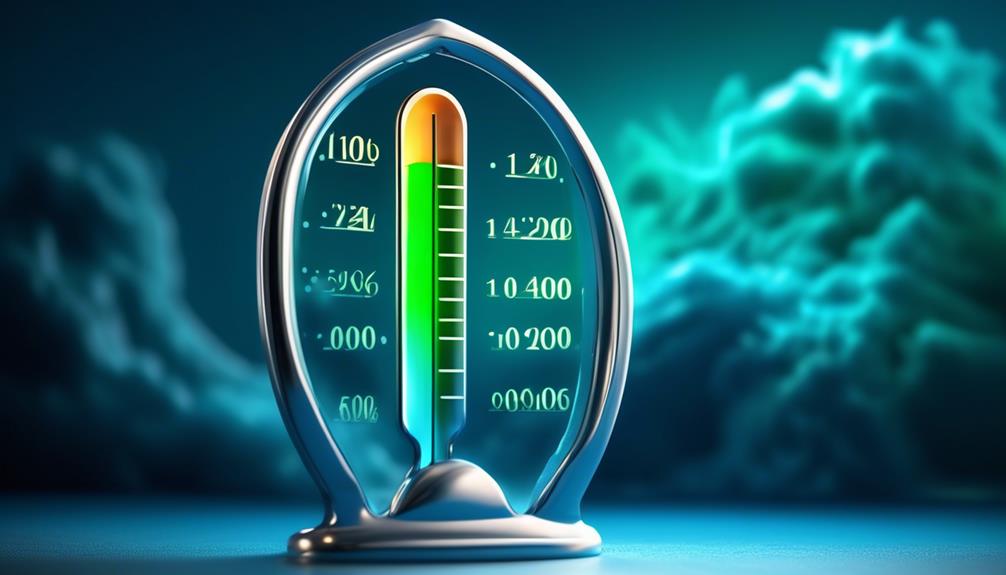
As we focus on improving IP reputation, we'll explore effective techniques for building and maintaining a positive reputation for our email domain.
By implementing domain warming strategies and actively managing our IP reputation, we can establish a trustworthy and reliable sender identity.
It's crucial to understand the factors that contribute to IP reputation building in order to ensure consistent email deliverability.
IP Reputation Building
To enhance IP reputation, gradually building email send volumes from a new domain is crucial for establishing trust with ISPs and ESPs, ensuring optimal deliverability, and avoiding email blocking. When warming up an email domain, consider the following steps:
- Start with a dedicated IP address to have full control over your sending reputation.
- Gradually increase email send volumes over several weeks to build a positive sending history.
- Monitor email engagement metrics and adjust sending volumes based on the feedback received.
- As the domain reputation improves, gradually increase send volumes to reach the desired level.
Following these steps will improve your domain reputation, prevent email blocking, and maximize your email deliverability, ultimately leading to a successful warming up of an email domain.
Domain Warming Techniques
Gradually increasing email send volumes from a new domain is essential for establishing a positive email reputation and gaining trust from ISPs and ESPs. To warm up an email domain effectively, domain warming techniques should be employed. These include gradually increasing the volume of emails sent, maintaining consistent sending patterns, and ensuring engagement through relevant and valuable content. It's crucial to implement email authentication (SPF, DKIM, DMARC) to establish domain reliability and use a dedicated IP address for better reputation management. Below is a table summarizing domain warming techniques:
| Domain Warming Techniques | Description |
|---|---|
| Gradual Volume Increase | Increase email send volumes gradually over time. |
| Consistent Sending | Maintain a consistent sending pattern. |
| Engagement | Ensure engagement through valuable content. |
Avoiding Spammy Words

Utilize email content free of spammy words to enhance deliverability and avoid triggering spam filters. To achieve this, consider the following:
- Identify Common Spam Triggers: Familiarize yourself with words and phrases that commonly trigger spam filters, such as 'Act Now,' 'Make Money Fast,' and 'Free.' These should be avoided in email content to prevent being flagged as spam.
- Use Neutral and Informative Language: Replace spammy words and phrases with neutral or informative language. Instead of using aggressive sales pitches, focus on providing valuable and relevant content to the recipients.
- Monitor and Refine Content Regularly: Continuously monitor and refine the email content to ensure it remains free of spammy words. Regularly updating and adapting the content will help in maintaining a positive reputation for the email domain.
- Test Emails Before Sending: Before sending out emails, utilize spam checking tools to test for any potential issues. This proactive approach can help in identifying and addressing any spam triggers before the emails are distributed.
High-Quality Content

By focusing on providing high-quality content free of spam triggers, we can actively engage recipients and enhance the deliverability of our emails. Improving email content is crucial for warming up an email domain and maintaining a positive sending address reputation.
High-quality content not only reduces the likelihood of spam reports but also contributes to positive engagement with recipients. It's essential to avoid spammy words, grammar mistakes, and misleading content to ensure that the email content is relevant and valuable to the recipients.
Regularly cleaning email lists and ensuring content relevance can further help to improve open rates and engagement. By consistently delivering relevant and valuable content, we can establish a positive domain reputation, ultimately improving email deliverability.
This proactive approach to maintaining high-quality content aligns with the goal of warming up an email domain and fostering positive interaction with recipients. Therefore, investing time and effort into crafting high-quality content is fundamental to the success of email marketing campaigns and the overall reputation of the email domain.
Regular Conversations

Regular conversations with recipients are essential for maintaining engagement and building positive relationships over time. When warming up your email domain, engaging in regular conversations can significantly impact your domain's reputation and deliverability.
Here's how regular conversations contribute to maintaining a good reputation and positive engagement, while also mitigating deliverability problems:
- Active Engagement: Regular conversations signal to ISPs that your domain is actively engaged and trustworthy, which can positively impact your domain's reputation.
- Email Reputation: Consistently sending emails and engaging in regular conversations can contribute to a positive email reputation, which is crucial for ensuring good deliverability.
- Improved Deliverability: Maintaining regular conversations with recipients can help improve overall domain deliverability by establishing a positive sending reputation.
- Enhanced Open Rates: Engaging in regular conversations with recipients often leads to increased open rates and reduced spam complaints, further strengthening your domain's reputation and positive engagement.
Email List Maintenance

We need to prioritize email list maintenance to ensure our domain's reputation remains strong.
Cleaning our email list, removing inactive subscribers, and updating contact information are essential steps in maintaining a healthy and engaged subscriber base.
Cleanse Email List
To optimize the effectiveness of your email marketing campaigns, it's crucial to regularly cleanse your email list by removing invalid, outdated, or unengaged email addresses.
Here are four key reasons why maintaining a clean email list is essential for improving the performance of your email marketing efforts:
- Improve Email Deliverability: Regularly cleansing your email list helps to reduce bounce rates and avoid spam traps, thereby enhancing the deliverability of your emails.
- Enhance Engagement Rates: Removing inactive subscribers from your email list can lead to higher engagement rates, ensuring that your emails reach an interested audience.
- Optimize Email Marketing Performance: Email list maintenance is vital for ensuring that your campaigns are effective in reaching the intended audience, ultimately improving the overall performance of your email marketing.
- Save Resources and Increase Open Rates: Regularly cleansing your email list can save resources and increase open rates, leading to better email marketing results.
Remove Inactive Subscribers
After optimizing the effectiveness of your email marketing campaigns through the cleansing of your email list, the next crucial step is to remove inactive subscribers to further enhance engagement rates and maintain a clean and active email list.
Removing inactive subscribers is essential for warming up an email domain. It reduces the risk of spam complaints, improves email deliverability, and protects domain and IP reputation.
By regularly cleaning email lists of inactive subscribers, resources are saved, and open rates are enhanced. This process ensures that your email campaigns reach properly warmed and engaged recipients.
When an email domain is warmed up and maintained with active subscribers, it can handle a larger volume of emails per day, leading to improved overall email marketing performance and better engagement rates.
Update Contact Information
When updating contact information for email list maintenance, it's crucial to ensure that all subscriber details are accurate and current to maximize engagement and deliverability.
Here are four key steps to effectively update contact information for email list maintenance:
- Regularly review and update email addresses to remove outdated or incorrect ones.
- Prompt subscribers to update their contact information through targeted email campaigns.
- Use double opt-in processes to verify and update subscriber details.
- Leverage data validation tools to identify and correct any inaccuracies in the contact information.
Switching to a Dedicated IP
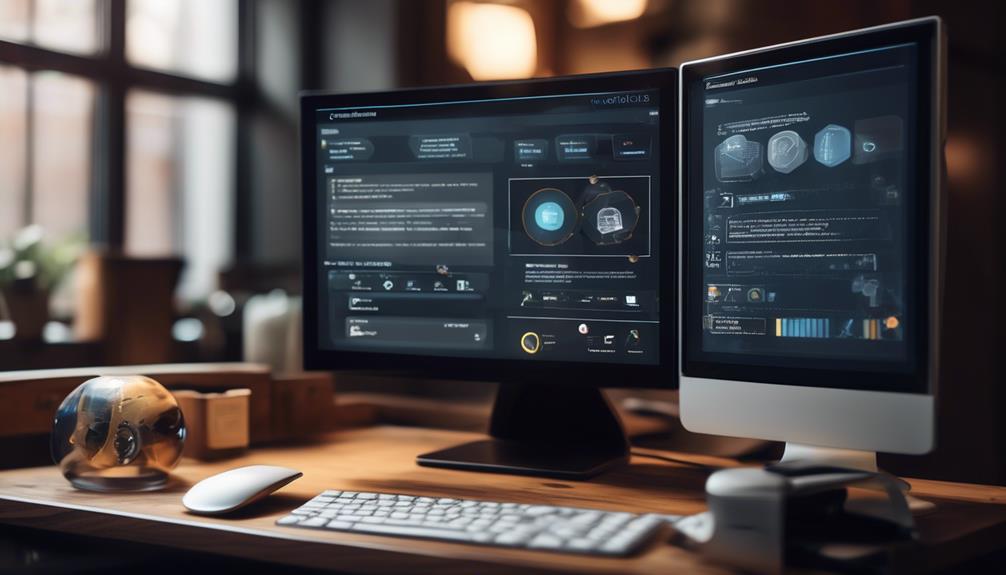
Switching to a dedicated IP provides greater control over email reputation and enhances deliverability rates, ensuring a trustworthy sender identity. By using a dedicated IP for your email domain, you can avoid the negative impact of other users on a shared IP and protect both your domain and IP reputation. This ensures better deliverability rates for your emails, as your sender identity gains more trust and control.
Furthermore, a dedicated IP allows you to automate the process of warming up a new email domain, saving time and effort. Tools like Warmup Inbox can be used to streamline this process. With a dedicated IP and a warm-up tool, you can also monitor email blacklists and track sender health score, ensuring a smooth warm-up process.
This level of control and automation is crucial for maintaining a positive reputation with inbox providers and maximizing the chances of your emails reaching the intended recipients. Therefore, switching to a dedicated IP is a strategic step in the warm-up process for an email domain.
Using Warm-up Tool
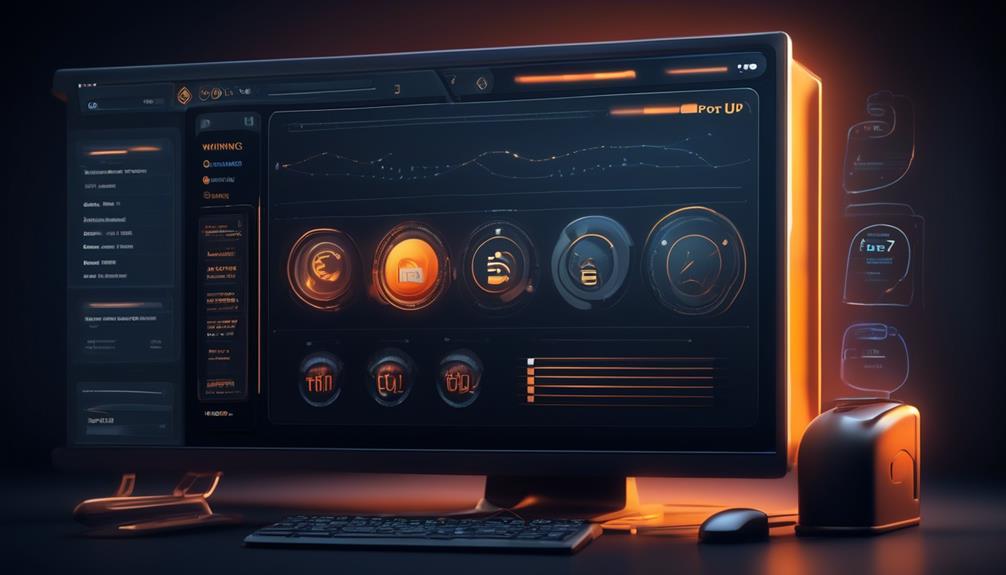
Utilizing a warm-up tool optimizes the process of gradually increasing email send volumes from a new domain, enhancing sender reputation and deliverability. When using a warm-up tool like Warmup Inbox, several benefits can be achieved:
- Automated Process: Warm-up tools automate the sending and receiving of emails to gradually increase the volume, saving time and effort while engaging with other email accounts within the platform.
- Establish Trust: These tools help build trust with Internet Service Providers (ISPs) and Email Service Providers (ESPs) by sending automatic emails, establishing a positive email reputation with them.
- Monitoring and Tracking: Warm-up tools allow for the monitoring of email blacklists and tracking sender health scores, ensuring a smooth warm-up process and providing insights into the domain's reputation.
- Educational Resources: Some warm-up tools provide additional resources such as video tutorials and guidance on factors impacting email deliverability, helping users understand and improve their email sending practices.
New Domain Warm-up Process

To establish a positive email reputation for a new domain, gradually increasing email send volumes is essential. This process, known as new domain warm-up, helps gain trust from Internet Service Providers (ISPs) and Email Service Providers (ESPs) to ensure that emails are delivered to recipients' inboxes. Starting with a new domain without an established reputation can lead to email blocking and raise suspicions. ISPs allow increased send volumes once they have historical data and trust in the domain. Domain warm-up is crucial as it improves the domain's reputation and ensures email deliverability.
Here's a breakdown of the new domain warm-up process:
| Week | Emails per Day |
|---|---|
| 1 | 50 |
| 2 | 100 |
| 3 | 500 |
| 4 | 1000 |
Following this gradual increase in the volume of emails sent per day, the domain can build a positive reputation and improve its chances of reaching recipients' inboxes. This process is vital for new domains to establish themselves as trusted senders and avoid being flagged as potential sources of spam or malicious content.
Warming up an Email Domain Steps

When warming up an email domain, gradually increasing the volume of sent emails is imperative to establish a positive reputation and ensure deliverability to recipients' inboxes. Here are the steps to warm up an email domain effectively:
- Start Slowly:
- Begin by sending a small volume of emails from the new address to a highly engaged list of recipients.
- This helps to gauge the initial response and prevents triggering spam filters.
- Gradually Increase Send Volumes:
- Over the course of several weeks, gradually increase the volume of emails sent.
- This incremental approach allows ISPs to observe the sending patterns and build trust in the domain.
- Monitor Engagement Metrics:
- Keep a close eye on open rates, click-through rates, and spam complaints.
- Adjust the send volumes based on the recipient's interaction with the emails.
- Avoid the Spam Folder:
- By following a consistent warm-up schedule and maintaining positive engagement signals, the likelihood of emails landing in the spam folder is significantly reduced.
Dos and Don'ts of IP/Domain Warming

Gradually increasing email send volumes from a new domain is crucial to establishing a positive email reputation and ensuring deliverability to recipients' inboxes. It's important to start with a low volume of emails and gradually increase the volume over several weeks. We should closely monitor email performance after each send, allowing for potential hiccups.
During the warm-up period, focus on sending high-performing emails to the most engaged subscribers to signal an active audience to Internet Service Providers (ISPs). Avoid sending large batches of emails or rushing the warm-up process, as this may negatively impact deliverability and domain reputation.
Beyond the warm-up period, continue to monitor email engagement and sender reputation to maintain a good sender reputation. By following these dos and don'ts of IP/domain warming, we can establish a positive email reputation and ensure that our emails land in recipients' inboxes, setting the stage for effective communication from the new address.
Frequently Asked Questions
How Do I Manually Warm up My Email Domain?
We gradually warm up our email domain by increasing send volumes over time to build a positive email reputation. This gains trust from ISPs and ESPs, ensuring our emails reach recipients' inboxes.
Starting with a new domain without reputation helps avoid suspicions and potential blocking. ISPs allow increased send volumes once they've historical data and trust in the domain, improving deliverability and domain reputation.
How Long Does It Take to Warm up an Email Domain?
It takes time to warm up an email domain, typically ranging from a few weeks to a couple of months.
Our experience with a new domain showed that it took around 4-6 weeks to establish a positive reputation.
Factors like email quality, engagement rates, and bounce management influence this timeline.
Monitoring performance metrics and balancing email volume with subscriber engagement are crucial during this process.
What Is Warming up an Email Domain?
Warming up an email domain involves gradually increasing email send volumes from a new domain to build a positive email reputation. This process is crucial for gaining trust from ISPs and ESPs and ensuring email deliverability. Without a good reputation, emails may be blocked.
ISPs permit higher send volumes once they've historical data and trust in the domain. Domain warm-up enhances reputation and guarantees email deliverability.
How Do I Warm up My Email Server?
We warm up our email server gradually to establish a positive reputation with ISPs and ESPs. This involves increasing send volumes over time to gain trust and ensure email deliverability.
By starting with a new domain without a reputation, we avoid raising suspicions and getting blocked. As ISPs gather historical data and trust in our domain, they allow increased send volumes.
This process improves domain reputation and ensures successful email delivery.
Is the Process of Warming Up a New Email Domain the Same as Warming Up an Existing Email Domain?
Yes, the process of warming up a new email domain is not the same as warming up an existing email domain. When starting with a new email domain, it’s important to establish a positive sending reputation by gradually increasing email volume and engagement over time.
Conclusion
In conclusion, warming up an email domain is crucial for establishing a good sending reputation and improving email deliverability.
Did you know that 80% of email deliverability issues are related to sender reputation?
By following the steps outlined in this article, you can ensure that your emails reach the intended recipients and avoid being marked as spam.
Remember to take the time to warm up your domain and set yourself up for email marketing success.
Natali – Editor in Chief (Strategy and Mastery, AI Expert) Natali, our Editor in Chief, is the driving force behind our content’s strategic direction. With a keen eye for detail and a deep understanding of market trends, Natali ensures that our content is top-notch and strategically aligned with our client’s goals. Her expertise in AI helps to seamlessly integrate advanced technology into our marketing strategies, pushing the boundaries of conventional marketing.
Email Warmup
Email Warm up Meaning
Get ready to unravel the mysteries of Email Warm-up Meaning and discover how it can transform your email campaigns in surprising ways.

The idea of warming up an email is similar to building a solid foundation for upcoming success.
The process involves more than just sending out emails; it's about strategically nurturing your sender reputation to ensure your messages land where they are intended.
However, the intricacies of email warm-up go beyond mere sending; there are nuances to explore that can significantly impact your email deliverability and engagement rates.
Curious to uncover the finer details that can shape your email campaigns for the better?
Key Takeaways
- Email warm up is crucial for establishing good sender reputation.
- Gradually increasing email volume and engagement enhances email deliverability.
- Email warm up improves engagement metrics like open rates and click-through rates.
- Configuring SPF and DKIM records and monitoring deliverability metrics are best practices.
Definition of Email Warm Up
In email marketing, the term 'Email Warm Up' refers to the strategic process used to enhance the reputation and deliverability of a new or inactive email account.
Email warm-up is crucial for establishing a good sender reputation, which is essential for getting past spam filters and reaching recipients' inboxes successfully.
This process involves gradually increasing the volume of emails sent from the new account while engaging with them by replying and marking them as important.
The goal is to signal to email providers that the account is legitimate and trustworthy, thereby improving email deliverability.
Importance of Email Warm Up

Enhancing email deliverability through a well-executed warm-up process is crucial for establishing trust and reaching recipients' inboxes effectively. Email warm-up is vital for ensuring that your emails aren't marked as spam and have a higher chance of being delivered directly to the inbox.
Here are some key reasons why email warm-up is essential:
- Building a Positive Sender Reputation: Gradually increasing the volume of emails sent from a new or inactive email account helps in creating a positive sender reputation.
- Avoiding Spam Filters: Proper warm-up procedures reduce the risk of emails being flagged as spam and increase the chances of reaching the intended recipients.
- Preparing for Cold Email Outreach: Email warm-up is particularly important for successful cold email outreach campaigns, as it helps in establishing credibility with email service providers and internet service providers.
- Improving Email Performance Metrics: A well-warmed email account leads to improved email deliverability, increased sending limits, and higher engagement metrics like open rates, click-through rates, and reply rates.
Benefits of Email Warm Up
Establishing a robust email warm-up process not only enhances deliverability and sender reputation but also yields significant benefits for email marketing campaigns.
By warming up your inbox, you can improve sender reputation, leading to increased email deliverability and avoiding spam filters. This positive reputation with email service providers enhances the chances of your emails reaching recipients' inboxes.
Additionally, warming up an email account increases sending limits, enabling you to send larger volumes of emails effectively.
Moreover, warm-up processes contribute to higher engagement metrics such as open rates, click-through rates, and click-to-open rates, fostering better interactions with your audience.
Building a positive reputation through email warm-up is crucial for successful cold email outreach, as it establishes credibility and trust with recipients.
Best Practices for Email Warm Up

Utilizing a strategic combination of automated and manual methods is key to effective email warm-up practices. When implementing best practices for email warm-up, consider the following:
- Gradual Increase in Sending Volume: Begin by sending a small number of emails each day and gradually ramp up the volume to avoid triggering spam filters.
- Maintain Sender Reputation: Engage with recipients by replying to emails, marking messages as important, and ensuring that your content is relevant and valuable.
- Configure SPF and DKIM Records: Properly set up SPF and DKIM records for your domain to authenticate your emails and improve deliverability.
- Monitor Deliverability Metrics: Keep a close eye on key metrics like open rates, click-through rates, and spam complaints to gauge the effectiveness of your warm-up process.
Key Considerations for Email Warm Up
As we shift our focus to 'Key Considerations for Email Warm Up', it's crucial to emphasize the strategic implementation of methods to maintain a high email reputation. When considering the key factors for email warm-up, one must prioritize the reputation of the email account.
It's essential to start slowly increasing the number of emails sent daily to avoid triggering spam filters. By warming up your email, you're essentially establishing trust with Internet Service Providers (ISPs) and inbox providers.
Additionally, when sending cold emails or emails on behalf of others, ensure that the sending volume aligns with daily sending limits to prevent being marked as spam. Utilizing an email warm-up tool can assist in automating this process and monitoring the sender's reputation.
Furthermore, integrating a spam checker tool into your warm-up routine can help maintain a positive email account reputation.
Frequently Asked Questions
How Do You Write a Warm up Email?
When writing a warm-up email, we focus on establishing a connection with the recipient by being concise, relevant, and engaging. We ensure the subject line is attention-grabbing, the content is personalized, and the call-to-action is clear.
Why Do We Warm up Emails?
We warm up emails to build a good sender reputation and prepare new accounts for sending at scale. Gradually increasing email volume helps establish a positive reputation and avoid being blocked. Utilizing an email warm-up service, whether automated or manual, can boost deliverability and engagement rates.
Choosing the right tool is crucial for generating interest, building trust, and enhancing sender reputation. Real mailbox responses improve credibility by simulating regular activity.
How Long Does Email Warm up Take?
Reaching maximum deliverability potential through email warm-up typically takes 8 to 12 weeks. This process enhances our reputation with ESPs and ISPs, increasing the likelihood of inbox delivery. It addresses issues like being blocked by spam filters and builds a positive sender reputation.
Automated email warm-up can expedite the process in 14 days, whereas manual warm-up involves gradually engaging high-reputation inboxes.
A smart email warm-up service enhances deliverability, boosts sales, and establishes trust.
How Do I Warm up My New Email?
When warming up a new email, we start by sending a small number of emails daily, replying to them, and marking them as important. This process typically takes 8 to 12 weeks to achieve maximum deliverability potential.
It enhances the chances of our messages landing directly in recipients' inboxes, addressing issues of spam filter blocking, and facilitating effective cold email outreach.
Email warm-up is a crucial step in establishing trust and reputation for successful campaigns.
How Does Mirasee’s Warm up Cold Email Technique Relate to the Meaning of Email Warm up?
When it comes to email warm up, Mirasee’s warm up email technique is a game-changer. By personalizing emails and connecting with the recipient before pitching, the sender can establish rapport and trust. This approach aligns perfectly with the true meaning of email warm up, which is about building relationships before making sales pitches.
Conclusion
In conclusion, email warm-up is crucial for establishing trust and improving deliverability for new or inactive email accounts.
By following best practices and engaging with recipients, businesses can increase the effectiveness of their email outreach campaigns.
But have you considered how email warm-up could be the missing piece to boosting your email marketing success?
Natali – Editor in Chief (Strategy and Mastery, AI Expert) Natali, our Editor in Chief, is the driving force behind our content’s strategic direction. With a keen eye for detail and a deep understanding of market trends, Natali ensures that our content is top-notch and strategically aligned with our client’s goals. Her expertise in AI helps to seamlessly integrate advanced technology into our marketing strategies, pushing the boundaries of conventional marketing.
Email Warmup
Master How to Warm up a Domain for Email Success
Dive into the art of domain warm-up for emails, unraveling strategies to ignite engagement and boost deliverability.

Beginning the process of warming up a domain for email is similar to igniting a flame in the vast realm of the digital world.
The initial steps are crucial, but the real challenge lies in sustaining that warmth over time.
Ensuring that our emails reach the right audience and resonate with them requires a strategic approach that evolves with the ever-changing email ecosystem.
Let’s explore the intricacies of domain warm-up and how we can nurture it to spark lasting connections with our recipients.
Key Takeaways
- Gradually increasing email volumes during domain warm-up is important for establishing a positive reputation.
- Implementing email authentication protocols and delivering high-quality content contribute to a successful warm-up process.
- Avoiding spammy content and using warm-up tools can help improve domain reputation.
- Regularly cleaning email lists and segmenting based on engagement levels are crucial for maintaining a good sending reputation.
Importance of Domain Warm-up
Gradually increasing email volumes during domain warm-up is crucial to establish a positive email reputation and ensure deliverability to recipients’ inboxes. Domain warm-up plays a pivotal role in the email marketing strategy as it sets the foundation for a strong sending reputation.
By gradually ramping up email volumes, a domain can improve its reputation with Internet Service Providers (ISPs) and Email Service Providers (ESPs). This process is essential to gain trust and avoid being flagged as spam. Starting with a new domain without proper warm-up can lead to low deliverability rates and a tarnished reputation.
Monitoring key metrics such as delete rate, spam reports, and engagement rate is vital during the warm-up phase to make necessary adjustments and enhance domain reputation. Implementing email authentication protocols and delivering high-quality content further contribute to a successful warm-up process.
Steps for Domain Reputation Improvement

To enhance domain reputation and ensure optimal deliverability, it is essential to gradually increase email send volumes from a new or cold email domain. Implementing email authentication mechanisms like SPF, DKIM, and DMARC is crucial for establishing domain reliability. Providing high-quality, relevant, and personalized content helps engage recipients and improve your domain reputation. Regularly cleaning email lists is essential for enhancing open rates and email deliverability. Utilizing a warm-up tool automates and optimizes the domain warming process, aiding in building your reputation effectively.
Steps for Domain Reputation Improvement Description Importance Gradually increase send volumes Establish a good sending reputation by slowly ramping up email volume. Crucial for domain warming process. Implement email authentication Use SPF, DKIM, and DMARC to ensure domain reliability and email security. Critical for email deliverability. Provide high-quality content Engage recipients with relevant content to improve domain reputation. Enhances recipient interaction. Clean email lists regularly Improve open rates and deliverability by maintaining clean email lists. Essential for successful email campaigns. Use a warm-up tool Automate and optimize the domain warming process for building reputation. Streamlines the domain warm-up process.
Avoiding Spammy Content
Establishing a reputable domain is crucial for avoiding spammy content in email campaigns. This can be achieved by implementing email authentication mechanisms and providing high-quality content.
To improve your email warming process and gradually increase your domain’s reputation, it’s essential to be mindful of the email content you send out. Avoid using spammy words or phrases that could trigger spam filters and harm your domain’s reputation.
Ensure that your email content is of high quality, relevant, and personalized to the recipient. Implementing proper email authentication protocols like SPF, DKIM, and DMARC can also help in avoiding spammy content.
Additionally, refrain from including too many links or attachments in your emails, as this can raise red flags with spam filters.
Utilizing Warm-up Tools

We leverage email warm-up tools to automate and optimize the domain warm-up process efficiently.
- By using warm-up tools, we can monitor the warming process, track performance, and make data-driven adjustments.
- These tools provide insights into our warm-up strategy’s effectiveness, allowing us to fine-tune our approach for optimal results.
- Regularly analyzing the data and metrics offered by warm-up tools enables us to gauge our progress accurately.
Utilizing warm-up tools is essential in establishing a good sending reputation for our email domain. It’s crucial for the success of our email campaigns and overall sender health.
These tools help us maintain a strong sending address, increasing the likelihood of our messages reaching recipients’ inboxes. Additionally, warm-up tools assist in building trust with Internet Service Providers (ISPs) and ensuring that our IP address isn’t associated with spam or blacklisted activities.
Clean Email List Maintenance
In optimizing our email domain warming process, maintaining a clean email list is paramount for ensuring deliverability and engagement. Clean email list maintenance involves:
- Regularly removing invalid or inactive email addresses
- Utilizing email verification tools for validity checks
- Segmenting based on engagement levels
- Implementing double opt-in procedures
By monitoring metrics like open and click-through rates, inactive subscribers can be identified and purged to enhance list quality.
New businesses embarking on email campaigns should prioritize clean email list maintenance to avoid falling into the trap of sending cold emails. It’s a good idea to start with a warm-up phase where a small number of emails are sent initially, gradually increasing the volume to acclimate the domain automatically. We recommend:
- Sending emails to engaged subscribers to build positive sender reputation and increase deliverability
- Keeping the email list free from bouncing and invalid addresses
- Utilizing verification tools to ensure a clean list, free from spam traps, enhancing the chances of getting your emails into recipients’ inboxes.
Frequently Asked Questions
How Do You Warm up an Email Domain?
We need to strategically warm up an email domain by gradually increasing email volume, monitoring domain reputation, and implementing email authentication.
To ensure success, we must provide engaging content, segment our email list, and use an email warm-up tool for efficiency.
Adjusting our strategy based on performance metrics is vital for building a strong sending reputation and improving deliverability.
Domain warming is a process that demands meticulous attention to detail and consistent optimization.
How Do I Warm up My Email Server?
Let’s start by addressing how we can warm up our email server effectively. By gradually increasing email send volumes over several weeks, we establish a positive reputation with ISPs and ESPs. This strategy builds trust and ensures our emails are delivered to recipients’ inboxes, not spam folders.
Monitoring our progress is key to maintaining optimal performance. Following best practices and segmenting our email list aid in successful domain warming.
How Long Does It Take to Warm up a New Email Domain?
It typically takes several weeks to warm up a new email domain properly. By gradually increasing email send volumes, we establish a positive reputation with ISPs and ESPs.
Monitoring factors like delete rate, spam reports, and engagement helps optimize our domain warm-up process. Implementing email authentication, improving IP reputation, and providing high-quality content are essential steps.
Regularly reviewing and adjusting our warm-up strategy based on performance data is crucial for building a strong sending reputation.
How Do I Warm up My New Email Address?
We warm up a new email address by gradually increasing email volumes over weeks to establish positive reputation.
Implementing SPF, DKIM, and DMARC enhances domain reliability.
Providing high-quality, relevant content engages recipients and betters domain reputation.
Regularly cleaning email lists improves open rates and deliverability.
Using a warm-up tool automates and optimizes the process, essential for good domain reputation.
Gradually increasing email volume daily helps deliverability and avoids spam flags.
Segmentation and performance monitoring are crucial.
Best practices and expert guidance are essential for a strong sending reputation.
Conclusion
In conclusion, maintaining a positive email reputation is crucial for long-term success in email deliverability.
One interesting statistic to consider is that 86% of emails sent are considered spam, highlighting the importance of following best practices for warm-up and reputation improvement.
By consistently sending engaging emails, monitoring and optimizing campaigns, and keeping email lists clean, you can ensure that your emails reach the intended recipients’ inboxes.
Stay dedicated to building a strong email reputation for continued success.
Natali – Editor in Chief (Strategy and Mastery, AI Expert) Natali, our Editor in Chief, is the driving force behind our content’s strategic direction. With a keen eye for detail and a deep understanding of market trends, Natali ensures that our content is top-notch and strategically aligned with our client’s goals. Her expertise in AI helps to seamlessly integrate advanced technology into our marketing strategies, pushing the boundaries of conventional marketing.

Navigating the complexities of ensuring email delivery to the right recipients requires understanding the importance of warming up email addresses, which is crucial for setting a solid foundation for successful digital communication.
However, the true art lies in understanding how to effectively implement this process to yield optimal results.
By exploring key strategies and quick tips, we can begin to unravel the nuances of enhancing email engagement and building genuine connections that resonate with recipients.
Join us on this insightful exploration into the realm of instantly warming up emails, where the path to improved communication awaits.
Key Takeaways
- Gradually increase sending volume to avoid triggering spam filters.
- Utilize a dedicated warmup tool for domain and IP warmup.
- Personalize messages and utilize email automation for timely responses.
- Infuse authenticity and empathy into email tone for successful outreach.
Key Strategies for Email Warmth
Let's dive into three key strategies that will instantly add warmth to your emails.
When it comes to email warmup, the sender reputation plays a crucial role. To warm up your email sending effectively, start by gradually increasing your sending volume to avoid triggering spam filters. Begin with a small number of warmup emails, then slowly ramp up over time. This gradual approach signals to inbox providers that you're a legitimate sender, improving your sender reputation.
Utilizing a dedicated warmup tool can streamline the warmup process. These tools offer features like domain warmup service and IP warmup system, ensuring that your emails land in the inbox and not the spam folder. By leveraging a warmup service, you can automate and optimize the warmup process, saving time and effort while maximizing deliverability.
Incorporating a warmup system into your email strategy is essential for establishing trust with inbox providers and enhancing the effectiveness of your email campaigns. By following these key strategies, you can enhance your email warmup process and achieve better results in your email marketing efforts.
Quick Tips for Email Engagement

As we aim to optimize our email warm-up process for maximum deliverability, let's now explore some quick tips to boost email engagement effectively.
When sending out new emails, consider using a tool like Instantly AI's unlimited warm-up feature to gradually increase sending volume. This approach helps prevent your emails from being marked as cold and improves the chances of landing in the inbox rather than the spam folder.
Monitoring your warm-up progress through the dashboard provided by Instantly AI can offer valuable insights into your inbox and spam rates, allowing you to make necessary adjustments for better engagement.
Establishing a positive reputation with email providers is crucial for improved email deliverability. Utilizing a private network of headless browsers, like the one offered by Instantly AI, can significantly enhance your warm-up process and increase the likelihood of your emails reaching the recipients' inboxes.
Enhancing Email Tone Effectively
Enhance your email tone effectively by infusing it with a touch of authenticity and empathy. When utilizing email warmup tools, remember that the tone of your message is crucial for successful email outreach. Personalization and empathy can significantly impact email deliverability and engagement rates.
Craft subject lines that resonate with your audience, sparking curiosity and interest. Utilize email automation to ensure timely responses and follow-ups, demonstrating reliability and professionalism.
Effective email warming involves not only technical aspects but also the human touch. Tailor your messages to connect with recipients on a personal level, fostering trust and long-term relationships. By sending emails that convey genuine care and understanding, you can enhance your brand's reputation and credibility.
Building Genuine Email Connections

Building genuine email connections starts with understanding the importance of authenticity in every interaction. When aiming to establish meaningful relationships via email, consider the following:
- Warm-up Services: Utilize warm-up services to gradually build a good reputation for your email account.
- Engage with Email Providers: Interact positively with email providers to enhance your domain sender reputation.
- Maintain a Balanced Approach: Strive for a balanced email sending strategy to avoid being marked as spam.
- Monitor Email Activities: Keep track of your email interactions through detailed reports to ensure you're fostering genuine connections.
Improving Email Communication Warmth
Let's infuse your email communication with a welcoming touch that resonates with your recipients' needs and interests. To enhance the warmth of your emails, consider using a slow ramp approach. By gradually increasing the volume of warmup emails, you can protect your domain while ensuring safe and effective deliverability.
Sending warm and engaging emails not only improves your opening rate but also contributes to building a positive reputation with your audience. Emulating the tone of a friendly conversation can make your emails more relatable and appealing.
To further improve your email communication warmth, involve your support team in the process. Encourage them to read and provide feedback on the emails you send. Their insights can help tailor your messages to better suit the recipients' preferences.
Frequently Asked Questions
How Do I Warm up My Email Instantly?
To warm up your email instantly, we suggest focusing on gradual progress for optimal results. By integrating tools like SENDNOW or QUICKMAIL AUTO WARMER and properly authenticating your account, you can improve deliverability.
Engage in meaningful conversations to boost email quotas. Analyze data with tools like WARMUP INBOX for monitoring and optimization.
How Long Does Instantly AI Take to Warm up EmAIls?
It typically takes Instantly AI a few days to warm up emails effectively.
Our system uses a vast network of real email accounts to boost your sending reputation, increasing inbox placement rates.
By simply connecting your accounts and clicking a button, you can activate our warmup process.
The warmup dashboard provides valuable insights on your progress, ensuring your emails are primed for successful delivery.
Trust Instantly AI to optimize your email performance efficiently.
How Do I Warm up an Email in Quickmail?
When warming up emails in Quickmail, we follow a strategic approach. By gradually increasing sending volume, we establish credibility with email service providers. This method prevents emails from being marked as spam and ensures high deliverability rates.
Automation saves time and offers valuable insights for optimization. Our proven strategy not only boosts reputation but also increases the chances of landing in the recipient's inbox.
How Do I Filter Instantly Warm up Emails?
To filter instantly warm up emails, we need to set specific criteria to identify them. By analyzing factors like email engagement rates, sender reputation, and content relevance, we can effectively separate these emails from the rest.
Utilizing advanced filtering tools and automation can streamline this process, ensuring that only the most promising warm up emails reach our inbox. This targeted approach maximizes efficiency and optimizes our email warming strategy.
Are There Effective Techniques for Quickly Warming Up an Email for Free?
Yes, there are effective ways to quickly warm up an email for free. One technique is to use a warm up email template. This allows you to introduce yourself, provide value, and start building a relationship with the recipient. It’s a great way to increase your chances of getting a response.
Can Mailshake Email Warm up Help Instantly Warm up Email?
Yes, using a mailshake email warm up guide can instantly help warm up your email. By following the guide’s tips and best practices, you can improve your email deliverability and inbox placement, ultimately increasing the effectiveness of your email outreach campaign.
Conclusion
In conclusion, with our Instantly Warm up Email feature, you can effortlessly boost your email reputation and increase your chances of success.
By following our key strategies and quick tips, you'll be on your way to building genuine connections and improving communication warmth.
Don't let your emails get lost in the spam folder – take advantage of our easy one-click activation process and watch your inbox engagement soar.
Trust us, your emails will thank you.
Natali – Editor in Chief (Strategy and Mastery, AI Expert) Natali, our Editor in Chief, is the driving force behind our content’s strategic direction. With a keen eye for detail and a deep understanding of market trends, Natali ensures that our content is top-notch and strategically aligned with our client’s goals. Her expertise in AI helps to seamlessly integrate advanced technology into our marketing strategies, pushing the boundaries of conventional marketing.
-

 Email Marketing2 months ago
Email Marketing2 months agoThe Convergence of Email and Chat: Integrating Messaging Platforms in Your Strategy
-

 Email Marketing2 months ago
Email Marketing2 months agoHyper-Personalization: Using Big Data to Create 1:1 Email Experiences
-

 Email Marketing3 months ago
Email Marketing3 months agoThe Psychology of Color in Email Templates: Choosing the Right Palette
-

 Email Marketing2 months ago
Email Marketing2 months agoPredictive Analytics in Email Marketing: Anticipating Subscriber Behavior
-

 Email Marketing2 months ago
Email Marketing2 months agoEmail Marketing in the Metaverse: Preparing for Virtual and Augmented Reality
-

 Email Marketing2 months ago
Email Marketing2 months agoStorytelling in Email Marketing: Crafting Compelling Narratives
-

 Email Marketing3 months ago
Email Marketing3 months agoHow to Create a High-Converting Welcome Email Sequence
-

 Email Marketing3 months ago
Email Marketing3 months agoHow to Create ADA-Compliant Email Templates










